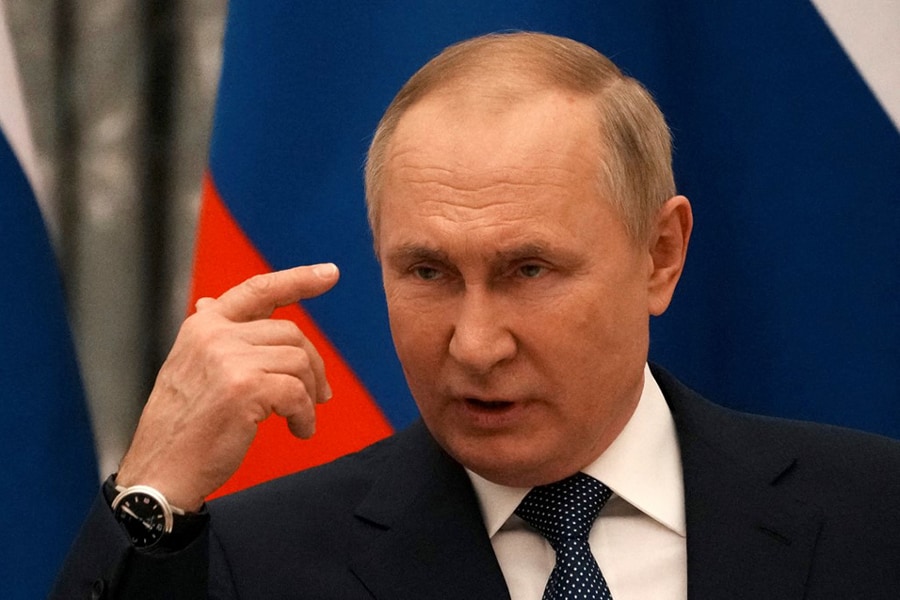
Putin insulated Russia's economy. Biden's sanctions not nearly enough to stop him on Ukraine
Biden has had the opportunity to sharpen his tools since 2014 when the West imposed sanctions against Russia to thwart a Ukraine incursion, at the same time Putin claims the country's economy is more self-sufficient and insulated since the last onslaught of sanctions
 The Kremlin Embankment in Moscow, Feb. 1, 2022. President Joe Biden, who as vice president helped oversee Ukraine policy in 2014, has to weigh what sanctions might compel Russian President Vladimir Putin to halt his new offensive, which the White House has judged to be an “invasion.”
The Kremlin Embankment in Moscow, Feb. 1, 2022. President Joe Biden, who as vice president helped oversee Ukraine policy in 2014, has to weigh what sanctions might compel Russian President Vladimir Putin to halt his new offensive, which the White House has judged to be an “invasion.”
Image: Thibault Camus / POOL / AFP
WASHINGTON — When the Obama administration imposed sanctions on Russia for invading Ukraine in 2014, American officials were hopeful they would deter President Vladimir Putin from further aggression.
Some of the officials argue today that the sanctions prevented Putin from ordering Russian forces beyond where they had halted on the Crimean Peninsula and in the eastern Donbas region. But Putin held on to Crimea. And on Monday, he ordered more troops into an insurgent-controlled area of eastern Ukraine where thousands of Russian soldiers have been operating and said the Kremlin was recognizing two enclaves as independent states.
Now, President Joe Biden, who as vice president helped oversee Ukraine policy in 2014, has to weigh what sanctions might compel Putin to halt his new offensive, which the White House has judged to be an “invasion.” The White House is taking a step-by-step approach, trying to calibrate each tranche of measures to Putin’s actions.
“I’m going to begin to impose sanctions in response, far beyond the steps we and our allies and partners implemented in 2014,” Biden said Tuesday in announcing a new set of sanctions. “And if Russia goes further with this invasion, we stand prepared to go further.”
©2019 New York Times News Service







